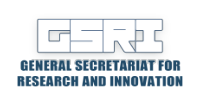The project Migration and strategies of development in the periphery of the “Western World” during the early Post-World War II period (Greece, Portugal / Brazil, Argentina), aims at studying the connection between migration policies and strategies of development in the periphery of the “Western World” in the early post-WWII period. It focuses on two comparable sending countries (Greece and Portugal) and two comparable host countries (Brazil and Argentina). These four countries, apart from their common social and economic features, became, in the postwar era, part of the periphery of the “Free world”.
During the 1950s the successive governments of countries in the periphery of the so-called “Free World”, either democratic or authoritarian, set as a priority the “modernization” of their societies since underdevelopment was considered as a source of social and political instability. In this context migration policies that promoted either emigration or immigration became important part of the development strategies in sending and receiving countries respectively. The huge and under populated South American developing countries such as Brazil and Argentina looked at skilled European immigrants as a solution to their deficiencies in qualified human resources whereas overpopulated Southern European countries tried to get rid of their population “surplus” which was considered as a main factor for high unemployment, poverty and underdevelopment.
At the same time, the migration-development nexus had a strong presence in the international policies of that period and in the post-war world system. Recently founded international organizations such as the ICEM (Intergovernmental Committee for European Migration), under the leadership of the United States, tried to integrate Southern Europe and Latin America in the internationalized market of the “Free world” through immigration and development strategies. In that context, discourses and policies that linked migration with development were mobilized to join the countries of emigration and immigration, which had to some extent complementary interests. Efforts to improve the ties between the countries of the "free world" were supported by the imagery of their integration through development and modernization.
The basic axes of the project are:
- To study the development strategies adopted by four countries in the periphery of the West during the post-WWII period and to see how immigration was related to development.
- To search if and to what extent the needs of the sending and the receiving countries were complementary.
- To study the complex relationship between the national strategies of the developing countries and the priorities set by international organizations that shaped the Postwar Western World (among them the ICEM).
- To investigate how the United States tried to integrate Southern Europe and Latin America in the internationalized market of the “Free world” and what was the role migration played in this strategy.
- To study the representations of immigration in both sending and receiving countries on a comparative basis.
Grant
The program Migration and strategies of development in the periphery of the “Western World” during the early Post-World War II period (Greece, Portugal / Brazil, Argentina) is supported by the funding provided by the Hellenic Foundation for Research and Innovation (HFRI) of the General Secretariat for Research and Innovation of the Greek Republic, within the context of the first HFRI call for Research Projects for the support of Post-graduated researchers. The total funding of the Project is 170.000 Euros, while the timeframe of its implementation 36 months.




